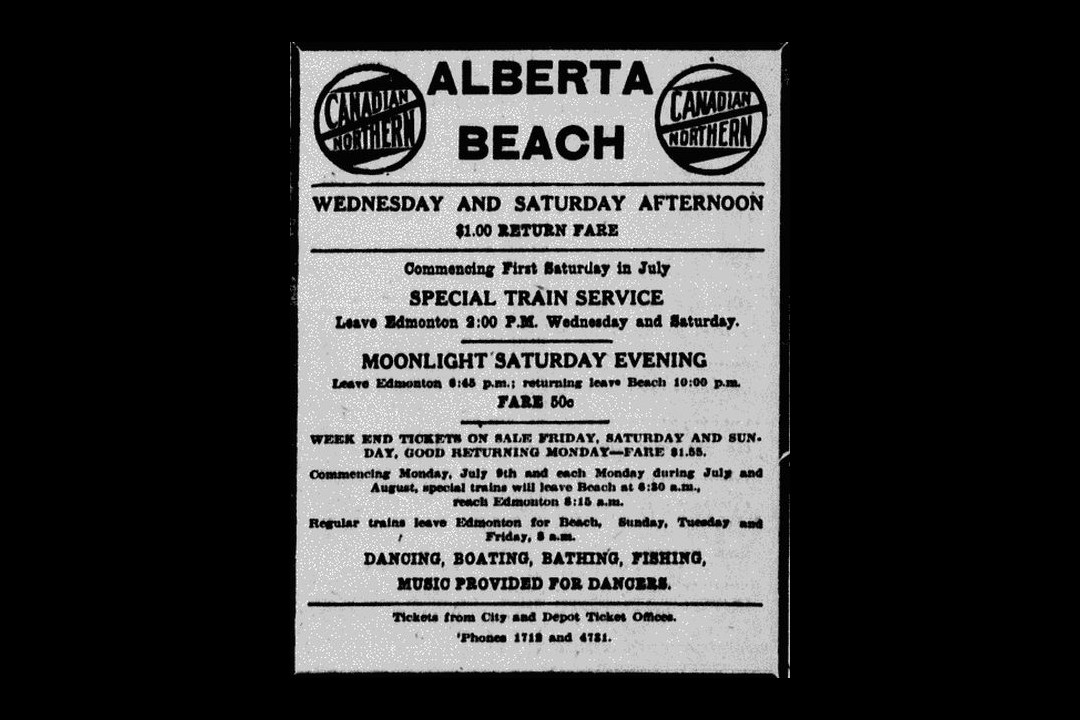On this day in 1917, beachgoers in Edmonton were taking the Moonlight Express train to Alberta Beach, 60 kilometres northwest of the city.
Once there following a less than two-hour trip by rail, they would be greeted with a few new additions. That summer, a new train station was built, as well as a wide boardwalk connecting the station to the town and the beach. It was all part of Alberta Beach's growing popularity as a summer getaway for Edmonton residents.
Alberta Beach got its start as a destination in 1912, when the Canadian Northern Railway expanded west of Edmonton. The rail line ran close to the southern shore of Lac Ste. Anne. With that shore's sandy beach and serene scenery, the railway thought it offered a perfect place for its employees to enjoy a little recreation. Soon after, the CNR sent its employees to the beach for picnics and other events. Then the railway began to offer the same for the employees of large companies in Edmonton, like Woodwards. It wasn't long before the small stop grew into a popular tourist spot.
Before long, Canadian Northern started a special train service to take tourists from Edmonton to Alberta Beach in July and August. One of the many services was dubbed the Moonlight Express. It cost $1 for a round trip that left Edmonton on Saturday evening and returned late Sunday night. The train offerings led to more beachgoers, which led to more facilities to cater to them. The railway eventually built more picnic sites, sports fields, and other amenities at Alberta Beach.
The history of the Moonlight Express isn't without tragedy, however. On July 28, 1917, the Express collided with a freight train carrying coal and other goods. The wreck killed five people and injured 41. Another train was dispatched from Edmonton to transport doctors and volunteers to help the injured, according to the Edmonton Journal.
Despite the tragedy, the Moonlight Express kept running, and Alberta Beach kept growing. By the 1920s, it had grown into a summer village, with more residents and businesses. By 1929, the railway added a pier out into the lake, a dance pavilion, and a campground.
The rail line was central to the growth of Alberta Beach. But by the 1930s, the passenger traffic was in decline. In 1939, Canadian Northern cancelled the train service and the rail lines were torn up. The railway sold off the facilities that it had built, including transferring responsibility for the pier to the federal government. But while the Moonlight Express was no more, Alberta Beach continued to grow.
The beach now has a year-round population of just more than 1,000 and still serves as a summer destination for Edmontonians looking to escape city life for a weekend — although a recent water-quality advisory might dampen some of their plans. Earlier this month, the village's museum started an exhibit that highlights the history of the Alexis Nakota Sioux Nation and their deep connection to Lac Ste. Anne and area.
This clipping was found on Vintage Edmonton, a daily look at Edmonton's history from armchair archivist @revRecluse of @VintageEdmonton.

